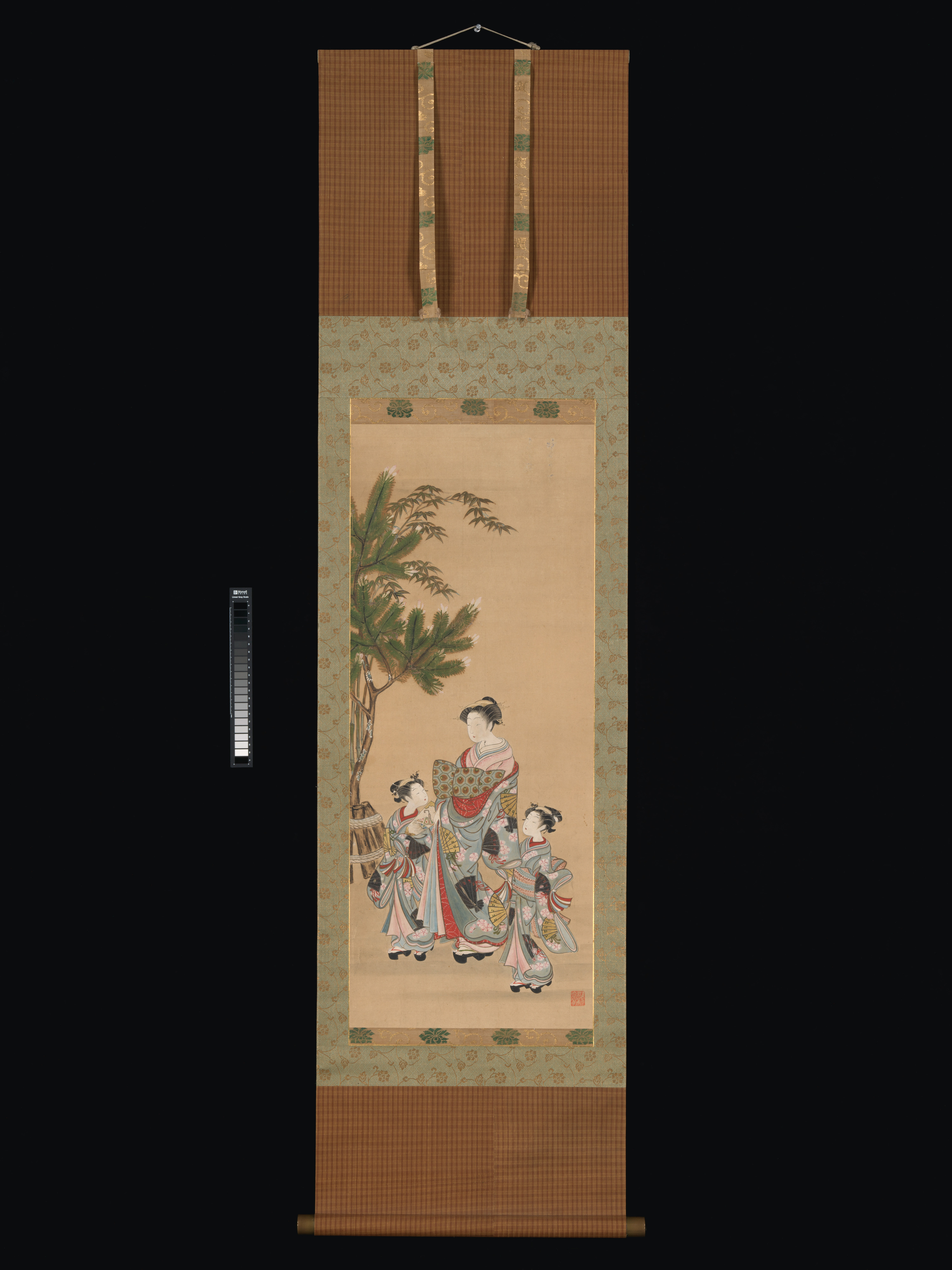Courtesan and Two Attendants on New Year's Day
Isoda Koryūsai Japanese
Not on view
A young courtesan dressed in spring finery decorated with plum blossoms and fan motifs promenades with two of her girl attendants called kamuro, bedecked in matching garments. The obi sash tied in front indicates that she is a courtesan of the pleasure quarters since such knots were easier to unravel than those tied behind, as was the custom for most women. The temporary stands of pine boughs and bamboo stalks were set up along Nakanochō, the main thoroughfare of the Yoshiwara pleasure quarters in Edo (present-day Tokyo).
The artist Isoda Koryūsai was born into a warrior-class family but became a masterless samurai (rōnin) after the death of the head of his clan. He moved to Edo where he first made prints on samurai themes but soon shifted to the more salable theme of beautiful women. Occasionally he created deluxe paintings for a wealthier clientele.
Due to rights restrictions, this image cannot be enlarged, viewed at full screen, or downloaded.
This artwork is meant to be viewed from right to left. Scroll left to view more.




